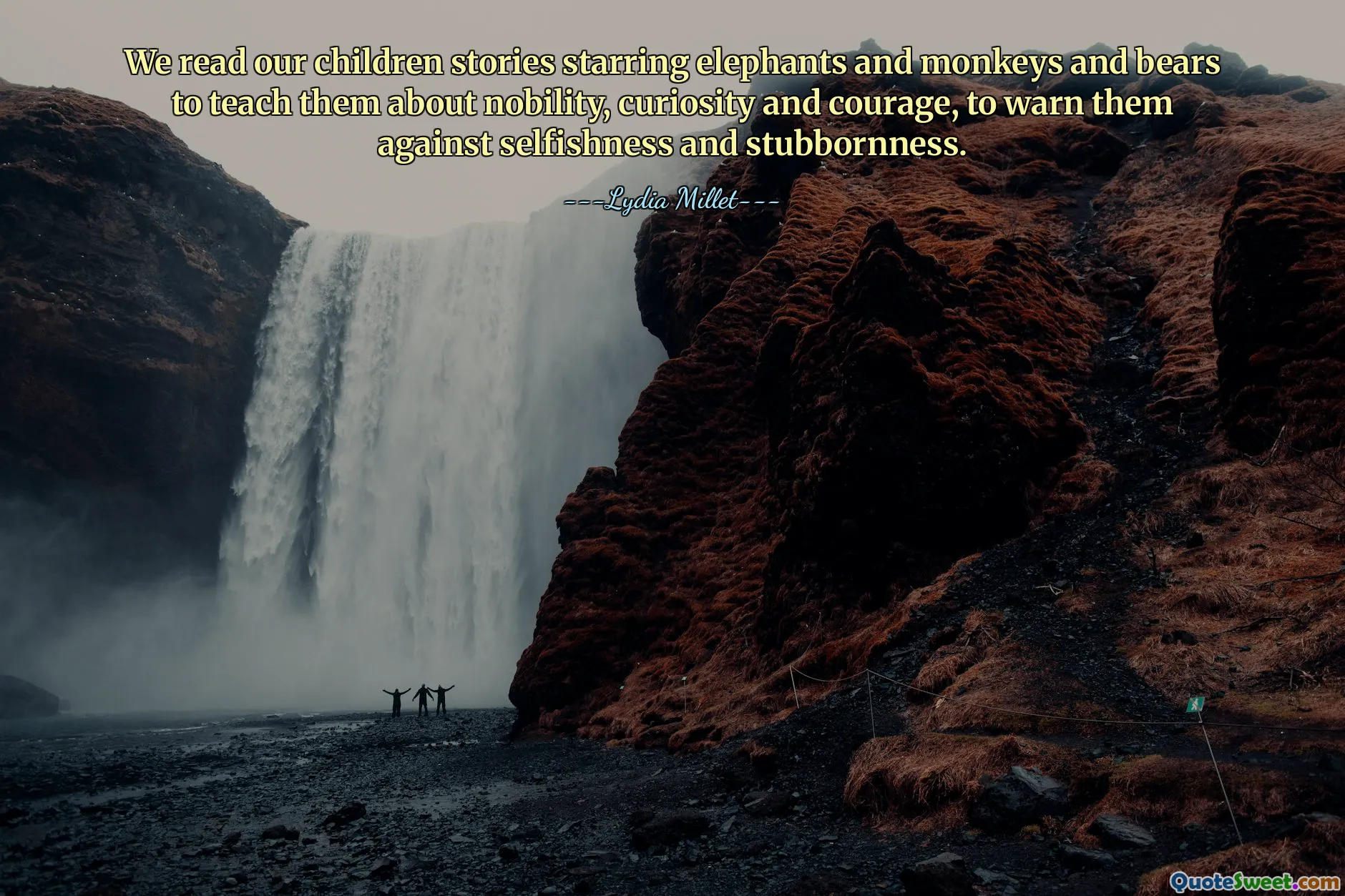
We read our children stories starring elephants and monkeys and bears to teach them about nobility, curiosity and courage, to warn them against selfishness and stubbornness.
The quote captures the timeless role of storytelling in a child's development, highlighting how narratives featuring animals like elephants, monkeys, and bears are not just entertaining but educational tools. These characters symbolize virtues such as nobility, curiosity, and courage — traits that parents and educators aspire to instill in children. The use of animals serves as a relatable and engaging method to simplify complex human qualities, making moral lessons accessible from an early age.
Moreover, the mention of warnings against selfishness and stubbornness underscores the dual purpose of stories: to inspire and to caution. Stories become a playground where children can encounter challenges and consequences in a safe, imaginative setting, fostering emotional intelligence and ethical reasoning. This approach to teaching emphasizes indirect moral guidance rather than didactic instruction, allowing children to internalize lessons through empathy and reflection.
In a broader context, this quote reminds us that literature and storytelling are foundational to cultural transmission and the formation of social values. By choosing animal protagonists, we tap into archetypal imagery that resonates across societies, bridging generations and backgrounds. It also highlights the importance of nurturing qualities that contribute positively to both personal growth and community well-being. Ultimately, this underscores the profound power of stories as instruments of education, shaping character and worldview from infancy onwards.










